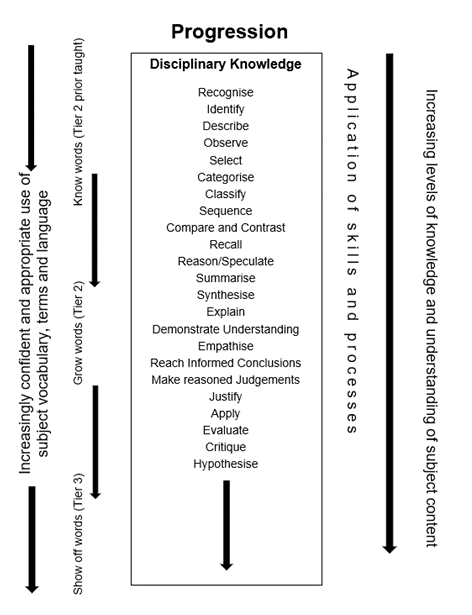History
Intent
|
Intent for History Year 1 to Year 6 Our vision for History is to foster an environment in which all children engage in the study of compelling and challenging historical enquires - investigating questions about people and events in the past in order to enable them to better understand their lives today and for a future as more informed and enlightened citizens. Through the study of history pupils will develop a wide range of critical thinking skills, which enable them to understand the subjective nature of ‘fact’ and opinion when reaching conclusions and making judgements about the past. With this in mind we have established a school curriculum plan for history as an entitlement for all pupils that is:
|
Implementation
|
The teaching, learning and sequencing of the history curriculum is as follows:
The History lead, Curriculum lead and Senior Leadership team complete a regular programme of monitoring, evaluation and review. Good practice is highlighted and shared, helping contribute to the ongoing commitment to further develop. Where appropriate, children will have opportunities to explore artefacts, participate in high-quality visits/visitors and explore local heritage sights to gain cultural capital and irresistible learning opportunities. This will help children to recognise the value and purpose of History. Our school’s coverage reflects the important role of history within EYFS provision. History coverage is addressed within the new Past and Present Early Learning Goals, with child-led learning opportunities based on their own life-story and family history, a focus on significant people such as Mary Anning and the use of artefacts, providing children with opportunities to distinguish between the past, present and future. The ability to play will be harnessed to establish basic historical development. The use of carefully selected History based story books and are used as a key mechanism for learning. In Key Stage 1 the units start with the present, the local or the known before then looking back. For example, children begin by looking at a current great British explorer. This allows children to link it to exploring in the past before the modern technology that the children take for granted and then to cast ahead to consider what exploring might be like in the future. In lower Key Stage 2, children develop and cement their understanding of how time periods relate to each other with units organised chronologically. By upper Key Stage 2 children make links between their current learning and other areas studied but consider how this relates to what else is happening around the world at the same time. For example, when studying the Shang Dynasty, children will make comparisons with the nature of the artefacts that remain from other contemporaneous Bronze Age societies elsewhere in the world, most notably in Britain and in Ancient Egypt. There will be increasing challenge in terms of depth of knowledge and understanding - children will become more accomplished as historians in upper key stage 2. Substantive knowledge/concepts Pupils knowing more, remembering more, doing more and understanding more about the body of knowledge we have identified in each enquiry as being the most valuable for them to learn. These are built-upon and increase as children become more accomplished historians. Disciplinary thinking skills Pupils learning History through ‘the lens of the discipline’ as young historians growing in their understanding of the methods and skills that historians employ to generate knowledge and historical narratives. As our pupils’ progress through the school from EYFS to Year 6 they are challenged to master and apply through a pedagogy of enquiry the critical disciplinary thinking skills that characterise and inform learning in History summarised here:
Conceptual knowledge Pupils embedding the key second order concepts of History which are established in the EYFS and revisited and consolidated through our curriculum provision and evident in our planning documentation and knowledge schemas and learning organisers for each enquiry. Key Second Order Concepts (fundamental intellectual building blocks of History):
Key Skills:
Knowledge of subject vocabulary and technical language In line with our vocabulary progression plan pupils are introduced to and revisit through the curriculum EYFS – Year 6 key specialised vocabulary and technical terms and these are identified on the learning organisers which support learning in each enquiry. Through this building and consolidation of language our pupils become increasing adept at communicating effectively what they know, remember, do and understand in History. |
Impact
|
